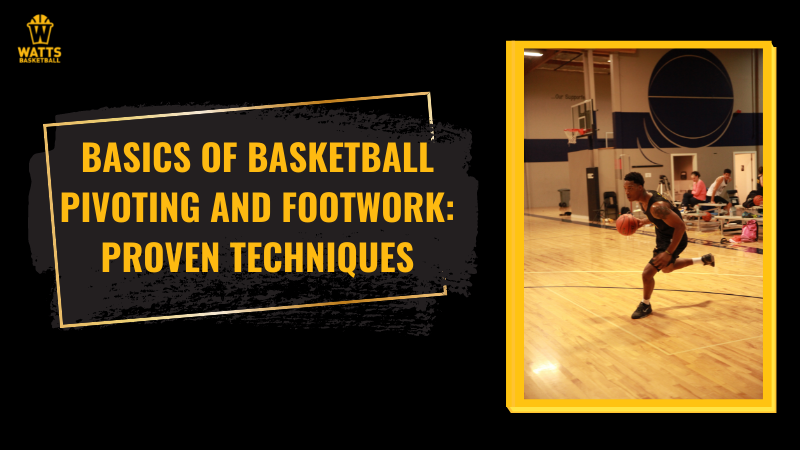What’s the one difference between average and star basketball players?
Well, for me, it’s footwork. If you build a solid basketball footwork skillset, you’ll play offense, defense, rebound, or any other part of the game exceptionally and with solid control.
Additionally, one aspect in footwork that can be glossed over is the ball handler’s Pivot Foot. The younger you are, the quicker you’ll learn it.
The aforementioned basketball footwork prowess can be brushed upon in any age – a kid to mid-twenties. So, without further ado, let’s get down to the basics of basketball pivoting.
What’s pivoting?
Ball-handler can move one foot around as long as the other foot (called pivot foot) stays in touch with the ground. Pivoting assists a player to beat the defender, clear the path on the way to court to strike, and make a pass or dribble toward the basket.
Basketball pivoting rules:
- Your foot should remain planted on the floor until you shoot, pass, or begin dribbling the ball.
- The ball can’t be held on for more than five seconds.
- Once pivoting foot gets in touch with the floor, you can’t change it with the other foot.
- You can rotate around your pivot foot.
Just so you know, if you change your pivot foot or lift it up, it’ll be called a traveling violation, and your team will lose the ball. However, when attempting a jump shot, the pivoting foot can be lifted, and the ball should be released from your hand before you land again on the floor. On the other hand, when you dribble, your pivot foot shouldn’t be lifted until you release the ball.
Master various footwork techniques with Watts Basketball
Basketball pivoting techniques
Let’s talk about the best pivoting techniques. You shouldn’t become flat-footed. Instead, you should try to have your weight back on your heels. Plus, the pivoting foot must not slide sideways. Rather, it should be on the ball of the foot. When pivoting, just rotate around on the ball of your pivot foot.
Which foot would be your pivot foot? In most cases, right-handed will have left foot as their pivot foot, and the case would be opposite for the left-handed. Post players can pick either foot as their pivot foot, depending on the game and defender’s position.
Basketball pivoting drills:
- Follow heels up style. Remember, if the foot is flat, you’ll stand straight and this isn’t recommended. Your pivot foot should remain in contact with the floor only with the behind part and area across the toe. By executing this bio-mechanical technique, you’ll maintain a low, balance, and powerful position to gain a tactical advantage, like to get away from the opposing player or to protect the basketball.
- Keep your head up with your eyes forward. Bend your knees. Don’t change your pivot point, and your pivot foot shouldn’t slide sideways.
- Train yourself for backward and forward pivoting. Practice it consistently and patiently, considering the pivoting rules.
Takeaways
The pivot foot plays a decisive part in the development of various opportunities during the game. Having a team that has strong pivoting skills will help in adapting to defensive play and exposing weaknesses within an opposition. Attack, defend, and stylish team play can be possible only if you learn, excel, and master pivoting skills.

